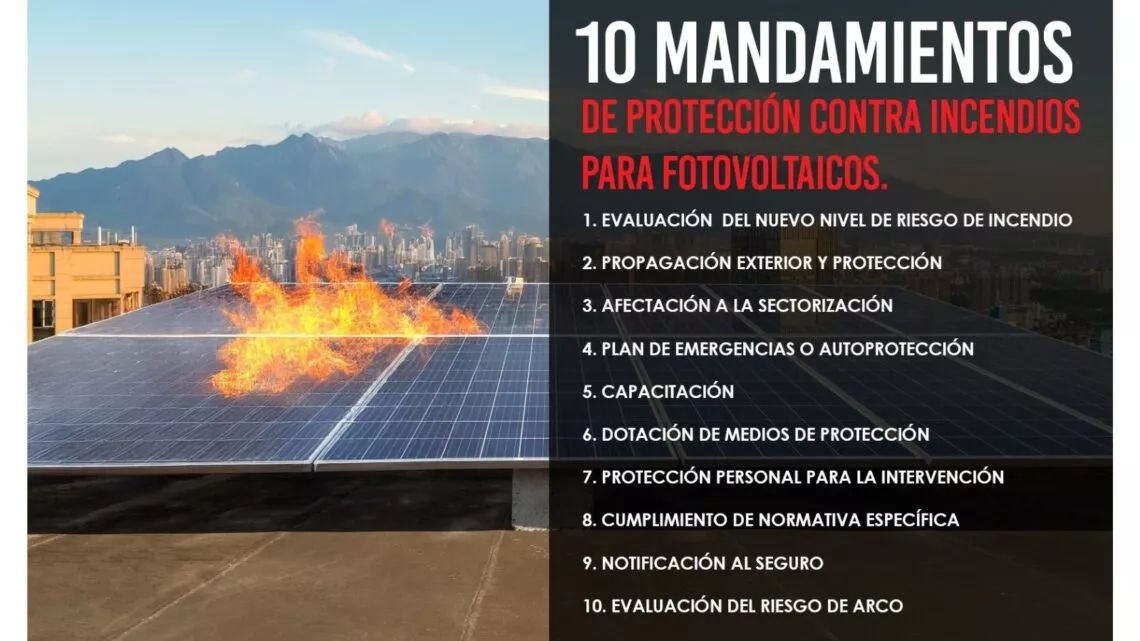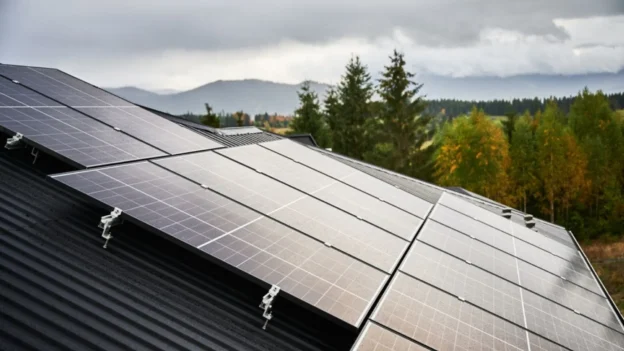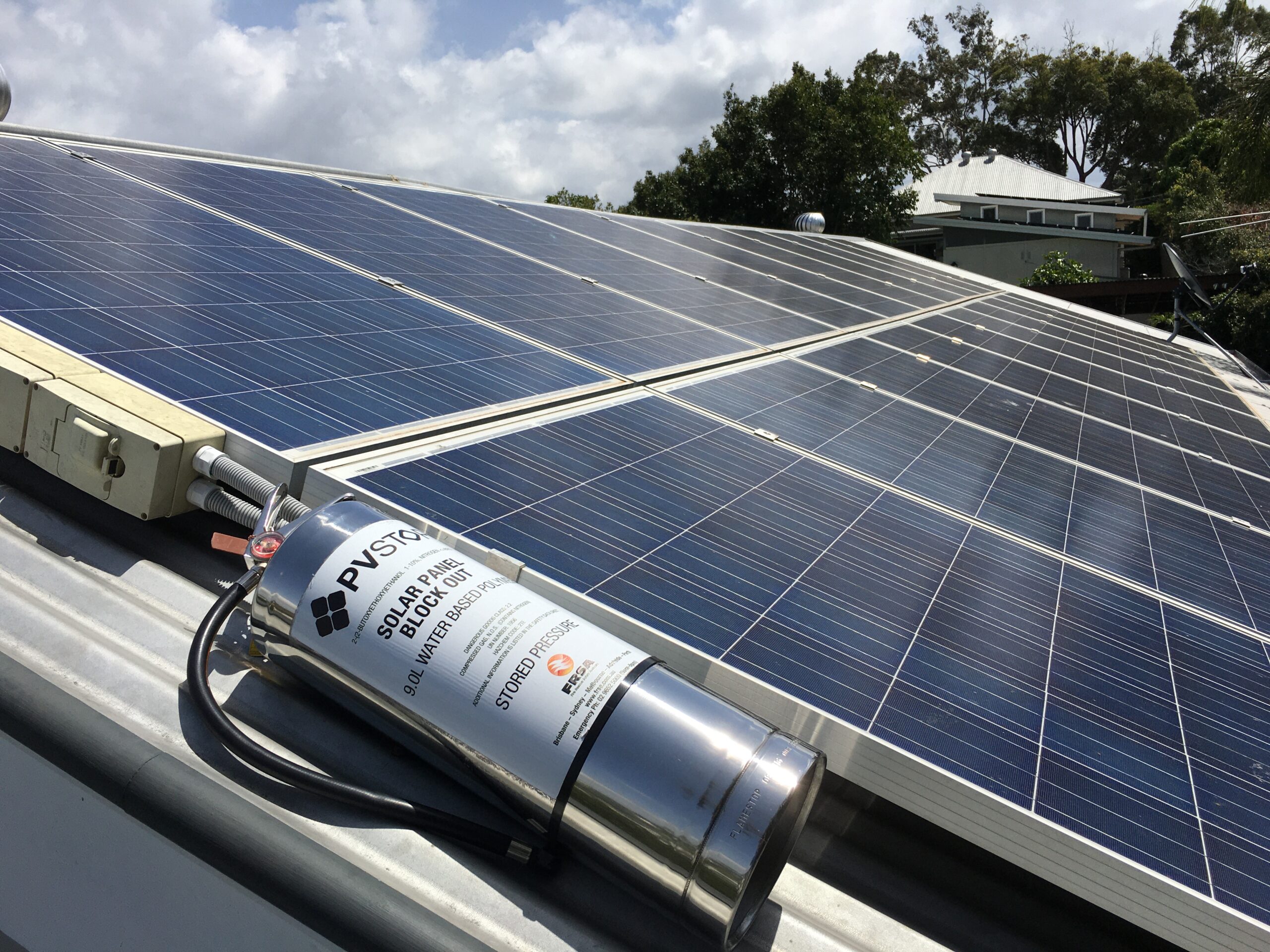In Part 1 of this article featured in the last edition we discussed the rise of solar energy from a cottage industry just a few decades ago to becoming a genuine mainstream electrical source. We discussed how legislation, safety and fire training have failed to keep up with the rapid expansion of this alternative energy source. We then moved on to discuss training objectives and offered some basic education in the differences between AC and DC electricity, how solar PV panels work, the different types of solar PV systems and finally the upcoming battery storage revolution.
With this foundation of knowledge in place we will now move on to discuss what goes wrong with solar PV systems, the dangers faced by fire and emergency services personnel, discuss the recent attempts to make solar PV systems safer and introduce you to a new product which offers a simple solution to this growing and complicated problem.
How Do Solar PV Systems Fail?
There are a number of reason why PV solar systems fail, ranging from physical damage and component failure to poor manufacture and workmanship.
Physical Damage
Physical damage to solar PV systems can be due to a number of factors. Weather events such as hail, lightening, fire, storm damage (such as fallen branches) flooding and water ingression are all well document causes of system damage. Vermin attack such as chewed wiring and nesting are other less considered causes of system damage. It is also worth noting that even when a solar PV system is seriously damaged, broken, shattered, burnt or inundated with water, it can still produce potentially lethal amounts of DC electricity.
Component Failure
In Australia hundreds of solar PV system failures (and fires) have been caused by faulty DC isolation switches. It must also be remembered that solar PV systems are comprised of delicate electronic componentry that generates electricity. When mounted on roofs and exposed to constant UV and both freezing and boiling hot conditions, 365 days a year, over time they will naturally deteriorate. As such solar PV systems should be periodically checked and maintained. However because of the installation location of most solar PV systems (on roofs) they are out of sight and out of mind; very few systems are maintained regularly or adequately. Finally, the vast majority of solar PV systems are relatively new (less than 10 years old). As these systems age, the number of incidents relating to component failure will escalate on an increasing scale.
Poor Manufacture & Workmanship
In the year 2000 there were 8 companies producing solar panels globally. In 2005 there were 20 companies producing solar panels globally. In 2007 there were 846 companies producing solar panels in China alone! Expertise is not earned overnight and one of the challenges of the exponential expansion of solar technology over the past decade has been a shortage of skilled labour, both on the manufacturing and installation sides of the industry. Without adequate legislation or regulation to keep abreast of growth, there are a large number of solar PV system installations that are sub-standard and a lesser number that should be considered unsafe or dangerous. Neither governments nor industry sources are properly equipped to manage or audit the existing and growing number of solar PV system installations and it has fallen upon fire and emergency services agencies to reactively manage and mitigate these risks as they are encountered.
The DC Danger Zone
As discussed earlier, as long as solar panels are exposed to light, they cannot be turned off and like any electrical generator or source that is live, must be considered dangerous. Even with an isolation switch installed at the solar PV system inverter, the solar panels on the roof and the electrical wiring leading down to the inverter and completely live and producing potentially lethal amounts of DC electricity. In professional terms this is known as the “DC Danger Zone”.
Unlike traditional sources of electricity solar PV systems cannot be switched off or isolated effectively. If the panels or wiring leading to the inverter are faulty and arcing, the solar panel frame, metal roof or metal guttering all have the potential to be conducting lethal amounts of electricity that can ignite fires or electrocute unsuspecting emergency services personnel, electrical technicians or the general public if they come into contact with a conductor (via a ladder or unbroken stream of water etc). Up until now there has not been an emergency response protocol or strategy that has adequately mitigated these threats.
Recent Rules, Regulations and Technologies
In recent times Governments and Industry have attempted to address the issues surrounding the DC Danger Zone with limited success.
DC Isolators
In Australia, roof top isolators are a legislated requirement. They were implemented with the intention of turning the panels off in the event of a short circuit or similar emergency. Although well intentioned, switching is an AC electricity solution and is not suitable for DC electrical applications. Every time DC is switched, it arcs on the circuit board and has the potential to set the switch alight. Since legislation was passed in 2011, there have been hundreds of solar PV related fires in Australia as a direct result of faulty isolation switches and literally tens of thousands of DC isolations switches have been recalled as a consequence of these incidents. Isolation switches on solar PV arrays is a bad idea and has created more problems than it has solved. This legislation seems set to be reversed in the near future.
Anti Arcing Equipment
In a further attempt to improve safety, Standards have now incorporated anti arcing devices in all newly installed inverters. This standard solves one problem in that it shuts down the inverter and disconnects the load from the solar panels, allowing the panel wiring to enter into open circuit voltage, extinguishing any “series arcing” occurring. But in the case of a parallel arcing fault, it can allow the full amount of the power available to be poured into the fault, fuelling the arc and making the arcing fault much worse!

Rapid Shutdown/Micro-inverter Panels
Micro-inverters are a hot topic, especially in the United States where there has been a legislative push to make micro-inverter solar PV panels the standard (over string panels). Micro-inverter solar PV panels are being marketed as a safer alternative to string array solar PV panels as a small (micro) inverter is installed directly underneath each individual panel, converting the DC electricity to AC electricity directly under panel and allowing electricity to be shut down directly below the panel. Note however that the panel itself can still not be shut down when exposed to light and still has the potential to arc potentially lethal DC voltage directly onto the panel frame, metal roof and guttering.
This is not a new technology, micro-inverter panels have been around for over 20 years. Apart from the perceived safety improvement versus string array panels, micro-inverter panels also have the advantage of having better shade tolerant properties than string array panels. The disadvantages of micro-inverter solar PV panels is that they are very expensive, up to three times the cost of a standard string array solar PV panel. Also, inverters are sensitive and delicate electronic components and do not like heat. This is why standard inverters are generally installed inside garages or on the shady sides of properties. By miniaturizing the inverter and installing them directly onto the back of each solar panel, micro-inverters are being exposed directly to the elements and high operating temperatures. As a result, the life expectancy of micro-inverter solar PV panels is greatly reduced versus standard string array solar PV panels.
Finally, we have noticed recently that in order to reduce the price of micro-inverter solar PV systems, manufacturers have started designing “micro-inverter” systems with 1 inverter to every 2 panels and even 1 inverter to every 4 panels. In essence these are now micro-string arrays rather than true 1 to 1 micro-inverter arrays. Micro-inverters are another step towards improved solar PV system safety, however they are not financially viable for most applications, are prone to failure and because of the prohibitive cost are now being watered down to a less than ideal solution.
Mitigating the dangers of the DC Danger Zone
With over 40 years of experience in the solar industry, The Australian Company Solar Developments recognised the need to find a simple, fast and economical solution to tackle the broad and complex risks associated with the DC danger zone. A solution that isolated the power at the source (the solar panel surface) thus eliminating all the complexities in the downstream componentry. The result of this search is PVStop, a global innovation developed by Luke Williams, one of the founding directors of Solar Developments and the inventor of PVStop. Luke is a CEC (Clean Energy Council) accredited renewable energy system designer and has been working in the Australian solar industry since the early 1970’s.
How does PVStop work?
PVStop is a state-of-the-art polymer film technology. Delivered from a pressurised cylinder similar to a fire extinguisher, it acts as a “liquid tarp” covering the solar panel surface and switching off the solar PV system in seconds, rendering the entire solar PV system safe.
With a delivery range of over 10 meters the product can be applied from the ground or from an elevated platform, eliminating the need to climb on to rooftops and operate at height. It can be utilised in all weather conditions and is touch dry within a matter of minutes, creating a waterproof coating that insulates the solar panels and protecting the panels from fire, heat and impact damage. The coating is also non-flammable and fire retardent and is capable of extinguishing the panels if they are on fire. In addition, the coating is non-conductive and anti-arcing, which is essential as its primary function is to isolate the power generated by solar PV systems. The coating also encases any nano-particles released in the event that the panels are damaged or during salvage operations. At the completion of an incident, the dry coating can simply be peeled off the solar panels like a latex sheet without causing any damage to the solar PV system or surrounding structure. The coating is non-carcinogenic, can be safely handled and disposed of with normal garbage waste
Reducing risk factors for emergency services and electrical technicians
The exponential growth of the solar industry has led to a commensurate rise in the number of solar system incidents encountered by fire and emergency services agencies. Ten years ago fire and emergency services agencies rarely encountered incidents involving solar PV systems; today incidents involving solar PV systems are encountered on a weekly basis. As the only safe, fast and reliable solution to isolating the power produced by solar PV systems, PVStop has rapidly come to the attention of fire and emergency services organisations both in Australia and abroad and is currently undergoing testing and review by a number of these services.
The broader picture around solar safety.
Products such as PVStop are only one component of the much broader solution required around solar energy and battery storage. Fire and emergency services require new and innovative training resources and fast adoption of new procedures as new products become available to solve new problems. New legislation is also needed to remove the responsibility wholly from fire and emergency services and place more onus on industry and system owners to install systems with more integrated safety solutions. The solar battery storage revolution is just getting started as is the wide adoption of electric vehicles and their integrated battery storage systems. These are the next challenges that are faced by the fire and emergency services industry, but that’s a topic for another article!
For more information, go to www.pvstop.com.au


